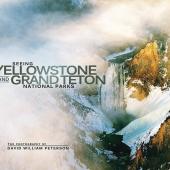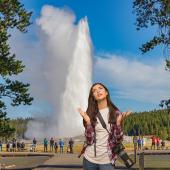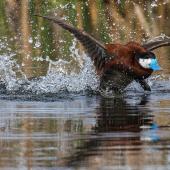Fish First
The hardest part of shooting fishing photos: I would rather be fishing. So if I’m putting my rod down to take pictures, I like to concentrate and take really good ones. Here are some hints to help you make the most of your fishing shots.
The Action
When the fisherman hooks up with fish, there can be some great action shots: anticipating the strike, catching the fish in mid-air when it leaps out of the water, or releasing the fish back to the water and shooting the splash. Anticipate and be ready them when they occur.
When shooting the cast, try this: have the fisherman stand in the sunlight but use a dark backdrop so the line is lit up in the foreground and pops against the background. Keep in mind that this is much easier to accomplish in a steep canyon where half the river is in the sun and the other is in the shade. And remember to keep your speed fast if you want to freeze the action of the cast. This may require you to increase your ISO on low-light days; I usually shoot the lowest ISO possible to maximize detail, increase color saturation, and reduce grain in the final images.
The Details
The best times to fish are also the best times to shoot: in the morning and late afternoon. The water provides beautiful reflections you can incorporate into shots; with a slower shutter speed and a tripod, the water appears to flow through the image. Focusing on small technical details when shooting makes your images stand out from basic snapshots. Using a macro lens, focus on flies that are hatching or lift a rock from the river and look for nymphs that are active in the water.
When photographing fish, always premeditate the shot before taking the fish out of the water. Be fast—take the photo and get the fish back in the water quickly if it’s not going into the frying pan. Here are two dirty tricks to enhancing the “grip and grin” photo: a wide angle lens will make the fish appear bigger, as will holding the fish closer to the camera.
Fishing and photography are similar in nature. If you just throw your line around, you’ll probably go home with stories of throwing your line around. Similarly, if you don’t focus on your subject, you’re really just wandering around pushing a button, and you’ll end up going home with a few mediocre snapshots at best. Ultimately, fly fishing is a relaxing and calming activity and it should be approached as such when photographing it. Don’t just shoot the fish you catch—enjoy the peaceful moments on the river and look for photos in the experience.
Ryan Turner resides in Big Sky with his family and has been shooting photos professionally in Montana for over 15 years.













